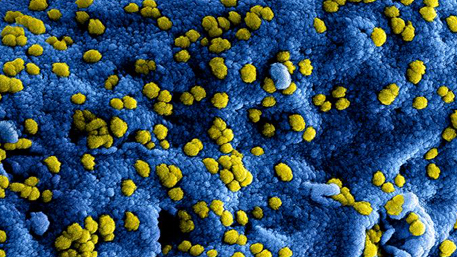
Ideally, scientific studies of COVID-19 risk factors for transmission and severity should include both viral and human genomes and the interaction of these two genomes, along with other traditional environmental, social and economic factors, and emerging types of big data. This is part of a precision public health response.
A New Resource for Genomics and Precision Health Information and Publications on the Investigation and Control of COVID-19 and other Coronaviruses
W Yu et al, BIORXIV, April 21, 2020
W Yu et al, BIORXIV, April 21, 2020
We developed a new online database that contains the most updated published scientific literature, online news and reports, CDC and National Institutes of Health resources. The tool captures emerging discoveries and applications of genomics, molecular, and other precision health tools in the investigation and control of coronavirus diseases.
Expert U.S. panel develops NIH treatment guidelines for COVID-19- “Living document” expected to be updated often as new clinical data accrue.
NIH, April 21, 2020
NIH, April 21, 2020

Host, Viral, and Environmental Transcriptome Profiles of the Severe Acute Respiratory Syndrome Coronavirus 2 (SARS-CoV-2)
D Butler et al, BIORXIV, April 21, 2020
D Butler et al, BIORXIV, April 21, 2020
Ethnicity and COVID-19: an urgent public health research priority
M Pareek et al, The Lancet, April 21, 2020
M Pareek et al, The Lancet, April 21, 2020
Solving the mysteries of coronavirus with genetic fingerprints
M Baker et al, NY Times, April 22, 2020
M Baker et al, NY Times, April 22, 2020
Using advanced genomic technology, scientists made two disconcerting discoveries. The first was that the virus brought in by someone who arrived from Wuhan carrying a nearly identical strain — had managed to settle into the population undetected. Then they began to realize how far it had spread.
Modeling projections for COVID-19 pandemic by combining epidemiological, statistical, and neural network approaches
S Uhlig et al, MEDRXIV, April 22, 2020
S Uhlig et al, MEDRXIV, April 22, 2020
Based on deterministic compartment models we propose an empirical top-down modeling approach to provide epidemic forecasts and risk calculations for (local) outbreaks. We use neural networks to develop leading indicators based on available data for different regions.
How many are at increased risk of severe COVID-19 disease? Rapid global, regional and national estimates for 2020
A Clark et al, MEDRXIV, April 22, 2020
A Clark et al, MEDRXIV, April 22, 2020
We analysed data from two large multimorbidity studies to determine appropriate adjustment factors for clustering and multimorbidity. Results We estimate that 1.7 (1.0 - 2.4) billion individuals (22% [15-28%] of the global population) are at increased risk of severe COVID-19 disease
Interleukin-6 blockade for severe COVID-19
M Roumier et al, MEDRXIV, APril 22, 2020
M Roumier et al, MEDRXIV, APril 22, 2020
Estimates of COVID-19 case-fatality risk from individual-level data
S Bignami et al, MEDRXIV, April 22, 2020
S Bignami et al, MEDRXIV, April 22, 2020
Increased PCR screening capacity using a multi-replicate pooling scheme
A Viehweger et al, MEDRXIV, April 22, 2020
A Viehweger et al, MEDRXIV, April 22, 2020
COVID-19 research has overall low methodological quality thus far: case in point for chloroquine/hydroxychloroquine
PE Alexander et al, J Clin Epi, April 21, 2020
PE Alexander et al, J Clin Epi, April 21, 2020
FDA OKs First COVID-19 Test Kit With Home Collection Option
L Francki, Medscape, April 21, 2020
L Francki, Medscape, April 21, 2020






















.png)










No hay comentarios:
Publicar un comentario